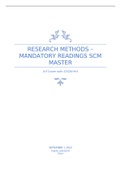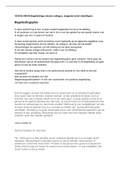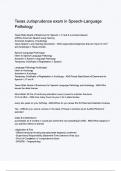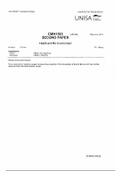Samenvatting
Summary RESEARCH METHODS – MANDATORY READINGS SCM MASTER 325236-M-6
- Instelling
- Tilburg University (UVT)
Extensive summaries of all mandatory readings for the Research methods couse for the academic 2022/2023 Supply Chain Master for September entrants.
[Meer zien]









